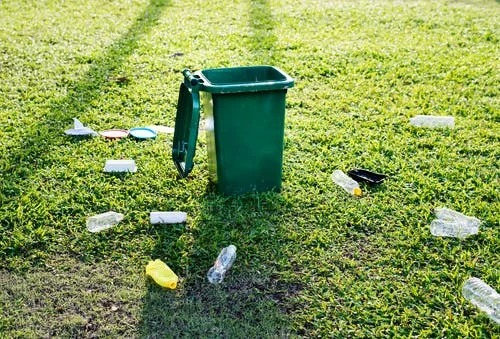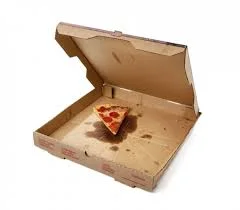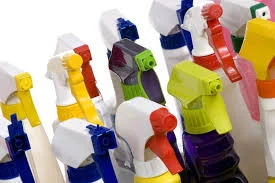Hey friends,
Happy August! It’s hard to believe summer is almost over. Here in the Northeast, we have a few weeks left before starting school. For those of you who have already started, I hope the new year is off to an auspicious beginning.
Since I began this Green is the New Blue project, I have been amazed and humbled by how many people I have heard from. I truly thought that my audience would basically be my family and five friends. Instead, I have gotten messages of support, encouragement and great ideas from as far away as New Zealand! Thank you, thank you to everyone who reaches out. I love these dialogues. The more conversations we start, the more connections we can make, the more change we can inspire.
Today’s post, however, hits a bit closer to home and is in direct response to a request from my number 1: my mom.
Anyone who knows my mom, Louise Riggio, knows she is basically the coolest lady ever. She is so keen on jumping on this green bandwagon and really wants to do better. I am so proud of her efforts and desires to leave this planet in good shape for her grandson and his pals.
The other day she came to me and sort of threw her hands up in the air. She was frustrated by all the lingo, terms, shapes and symbols, packaging and assorted jargon we are bombarded with on the daily. “What does it all mean, Steph!? Can you please write a blog post to clear this up for me? And other people, of course!”
No problem, mama. This one’s for you.
She is not alone in this frustration, I think. We are given so much conflicting information when it comes to the topic of environmental issues. I certainly am no expert, but I have done a ton of research to save you all some heartache and stress and hopefully help clear up some confusion. Please feel free to reach out on the comment section as well as through our website to ask more questions, share some tips and keep this dialogue going.
These topics apply to at home and in the barn. Because we all have lives outside the barn, right?
First thing’s first, here are my two favorite go-to sources
Earth 911 is a great resource for articles, how-to guides, blogs, resources. You name it, they have it.
I Want To Be Recycled has a great search functionality. Just enter your zipcode here to quickly access info unique to your community.
Now, onto my exhaustive (and exhausting) list:
Get to know these common symbols. It’s not as hard as you think if you use our handy cheat sheet!
Get to Know Your Plastics….
…and your neighborhood’s curbside recycling program’s capabilities. We all know those little symbols on the bottom of most plastic containers, but most of us (myself included) don’t know what they mean! Here is a handy guide you can use to familiarize yourself with the different kinds of plastics as well as a link to a cheat sheet you can print out and place at your home or barn to make it easy for yourself, friends, family, clients, employees to put their stuff where it belongs.
1 – PETE – Polyethylene Terephthalate
The easiest of plastics to recycle. Often used for soda bottles, water bottles and many common food packages. Is recycled into bottles and polyester fibers
2 – HDPE – High density Polyethylene
Also readily recyclable – Mostly used for packaging detergents, bleach, milk containers, hair care products and motor oil. Is recycled into more bottles or bags.
3 – PVC – Polyvinyl Chloride
This stuff is everywhere – pipes, toys, furniture, packaging – you name it. Difficult to recycle and PVC is a major environmental and health threat.
4 – LDPE Low-density Polyethylene
Used for many different kinds of wrapping, grocery bags and sandwich bags and can be recycled into more of the same.
5 – PP – Polypropylene
Clothing, bottles, tubs and ropes. Can be recycled into fibers.
6 – PS – Polystyrene
Cups, foam food trays, packing peanuts. Polystyrene (also known as styrofoam) is a real problem as it’s bulky yet very lightweight and that makes it difficult to recycle. For example, a carload of expanded polystyrene would weigh next to nothing so there’s not a lot of materials to reclaim, particularly when you take into account the transport getting it to the point of recycling. It can however be reused.
7 – Other
Could be a mixture of any and all of the above or plastics not readily recyclable such as polyurethane. Avoid it if you can – recyclers generally speaking don’t want it.
Check out Green Living Tips to download and print their extremely useful cheat sheet. It really comes in handy at our house and farm, and I think you will find it really useful as well.
So much of this is unnecessary! Think reduce before recycle to stop this vicious cycle (pun intended)
Reduce
The best way to recycle? Don’t do it in the first place. My dermatologist friend says the best kind of SPF is shade. Meaning, just don’t go out in the sun at all. I apply this to my trash. Try to eliminate things that need recycling from your life in the first place by choosing to use reusable items (bags, produce bags, straws, utensils, bulk items, etc) rather than worrying about whether or not that Keurig cup is recyclable. PS it is. See next topic.
Do it Right
We keep getting bombarded with scary statistics such as up to 90% of the plastic we use DOES NOT end up recycled. That means that even if we think we are doing a good job of putting our bottles in the correct bin, there is some kind of disconnect between our actions and the resulting waste. Some tips to make sure our plastics (and the rest of our trash, for that matter) have the best chance of being recycled:
- Clean it. A big reason waste that arrives at the recycling plant ends up getting thrown out is that it is dirty. Food waste, coffee grounds and other detritus clogs the processing machines. Workers at these plants don’t have time to clean our take-out containers or soap dispensers (I’m looking at you, leather conditioner) so they just chuck them.
- Rinse food out of containers. Still using single coffee pods (why?!), peel off the wrapper and rinse them out. Coffee is compostable, by the way! Do the same with soap bottles, spray bottles, canned pet food, you name it. The cleaner it is going into the bin the greater chance it has to be recycled.
- This applies to paper as well. If you have a pizza box with a big greasy splotch on it, rip it off and put the clean cardboard in the bin
Mmmm pizza
Pump nozzles are cool and useful, but usually not recyclable. The bottles, however, are. Time for a fly-spray bottle break up.
Break it Up
- If you have an item that contains more than one material, break it up into the component parts before popping each into the correct bin. For example, envelopes with clear address windows should be broken down and separated before recycled. If you receive a catalogue in a plastic sleeve, remove the paper from the plastic and recycle both individually.
- Spray bottles such as Show Sheen and Fly Spray should be broken up. The nozzle is usually not recyclable while the bottle is.
- Check out https://www.recyclecartons.com/learn/ to make sure your curbside recycling program takes cartons or Tetra Packs. Those juice and milk containers, are made of three different materials – paper, sandwiched around a thin piece of metal with a plastic screw top – which can make them complicated to recycle. I found that most places I spend time in do collect these types of containers, but check your area.
Finally
My mom also requested I clarify a few terms she encounters and misunderstands. Mom, you’re not alone. A big problem we all have nowadays is known as GREENWASHING, a public relations tactic by which companies throw around words that have no meaning in an attempt to sell products to consumers eager to go green. Thank you to culinarylore.com for this useful graphic
Lots of nice sounding words that don’t really mean much.
Some other words mom requested clarification on are:
Reusable:
Simply means something that can be used again without going through a mechanical process of recycling. This can mean something such as a reusable coffee mug or water bottle that is meant to have multiple uses OR taking something (for example, a coffee canister) and using it for something else (storing caulks or earplugs)
Single Use:
The opposite of reusable. Something that is intended to be used once and tossed. Examples of this are plastic grocery bags, coffee pods, zip-top bags, plastic wrap, to-go cups and containers. With creativity, some of these items can be reused (using a plastic produce bag to pick up dog poo) but it’s generally better to avoid this category of waste if possible. Some of this stuff is recyclable, but more often than not, ends up in a landfill or ocean.
Recyclable:
The process by which waste materials are converted into usable materials and objects. Many many things are technically recyclable, but not feasibly so. The system is imperfect, costs a lot of energy (that plastic bottle has to get from your house or barn, to your municipal plant, to another plant to be broken down, and then another one to be made into something else. That’s a lot of fuel!) and money to do so. Ask yourself not if something is recyclable but whether or not it will be recycled.
Biodegradable:
Something that is able to be broken down by natural organisms. Sounds science-y. But think about it this way. If you were to toss an apple core onto your lawn (instead of feeding it to your horse), eventually it would break down and decompose until it was gone completely. Maybe some birds would peck it, then bugs, then worms, then microorganisms like bacteria. Eventually it would be gone. That is the key difference between recyclable and biodegradable. Something that is recycled still ends up existing on this planet, just in a different form. Something biodegradable leaves no footprint. If you read my previous post on composting you will see that it takes certain conditions such as air circulation and sunlight to biodegrade properly. Generally, items listed as biodegradable are a good option.
Compostable:
Something compostable is, by definition, biodegradable and is something that can disintegrate, leaving no trace of toxicity in the soil, into natural elements if in the proper conditions. Examples of compostable materials are: food and food scraps, paper, wool, non-chemically treated fabrics. Please check out my previous blog entry to read all about my adventures in composting.
*A note on composting if you live in an apartment or otherwise don’t want to start and maintain your own bin. Many cities and towns have municipal compost collection sites. In New York City alone there are 150 places to drop off your food scraps to be turned into brown gold. Check out this link to see if one exists in your area. If it does, simply collect food scraps in a crock on your counter or in a container in your freezer and drop them off once or twice a week.
Eco Friendly:
Just a PR term, and largely empty. Read between the lines and see what the company means when they say eco-friendly. In my experience, many products that advertise as being eco-friendly are the worst offenders.
Mom, and other green friends out there, I hope this helps. Remember, when in doubt, dig deeper and don’t be afraid to ask questions. Give a shout in the comments below, on our socials, or send us an email. Let’s keep this momentum going.
Yours cleanly and greenly,
Stephanie






